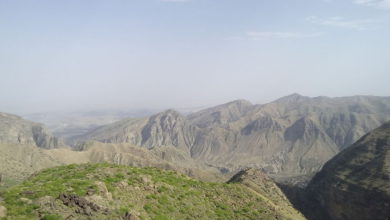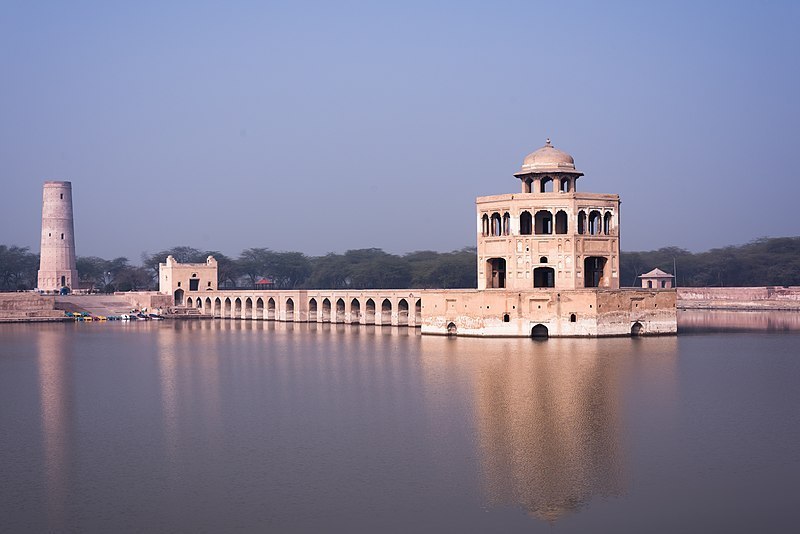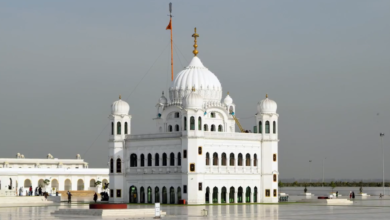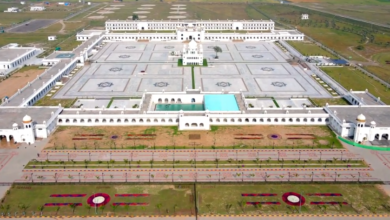Exploring the Architectural Splendor of Masjid Wazir Khan
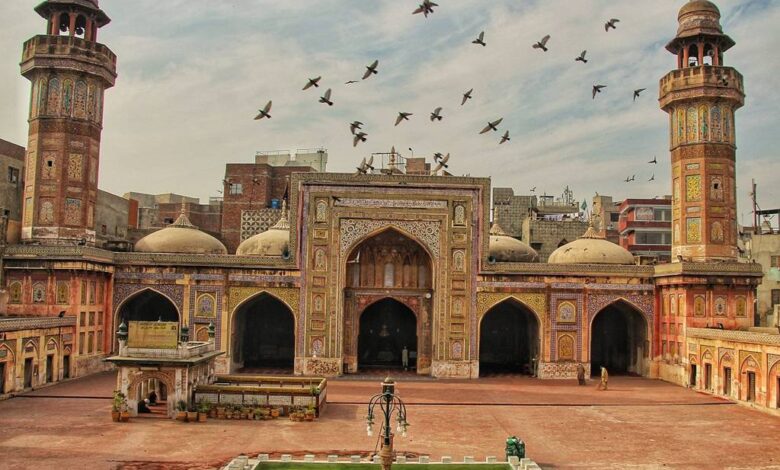
Masjid Wazir Khan is an architectural masterpiece located near the Delhi gate of the walled city of Lahore, Pakistan. This mosque is renowned for its intricate frescoes and vibrant tile work. It was commissioned by Hakim Ilm-Ud-Din Ansari, a prominent physician and governor of Lahore then.
This magnificent structure is a testament to Pakistan’s rich cultural history and an enduring symbol of Mughal architecture’s legacy in the region. Its complicated design and artwork not only serve as a visual delight but also reflect the cultural richness and artistic heritage of Lahore.
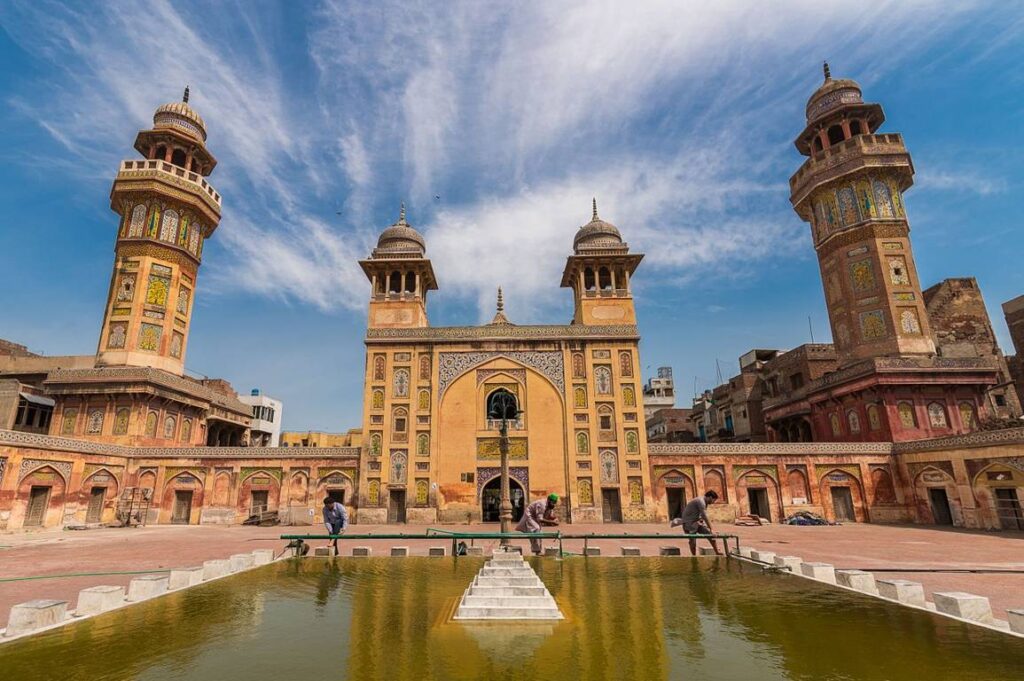
Architectural Features of Masjid Wazir Khan
Masjid Wazir Khan’s most remarkable architectural feature in Lahore. The mosque showcases an exquisite blend of Persian, Central Asian, and Indian architectural styles, resulting in a visually stunning masterpiece. The interior of Masjid Wazir Khan is outstanding, with its spacious prayer hall adorned with colorful frescoes depicting floral patterns, geometric designs, and Quranic verses.
Additionally, the mihrab (prayer niche) is a remarkable example of intricate tile work combined with calligraphy that adds to the overall grandeur of this architectural marvel. The exterior walls are adorned with beautiful frescoes featuring floral motifs and calligraphy, while the entrance gate is embellished with vibrant tile work.
One notable feature of this mosque is its minarets which attract from afar. The craftsmanship displayed throughout Masjid Wazir Khan showcases the skill and artistic prowess of Mughal artisans. Today, it is one of Lahore’s iconic landmarks and an important place for worship for Muslims in the city.
10 most beautiful places to visit in Pakistan
Book Lahore Historical Tours
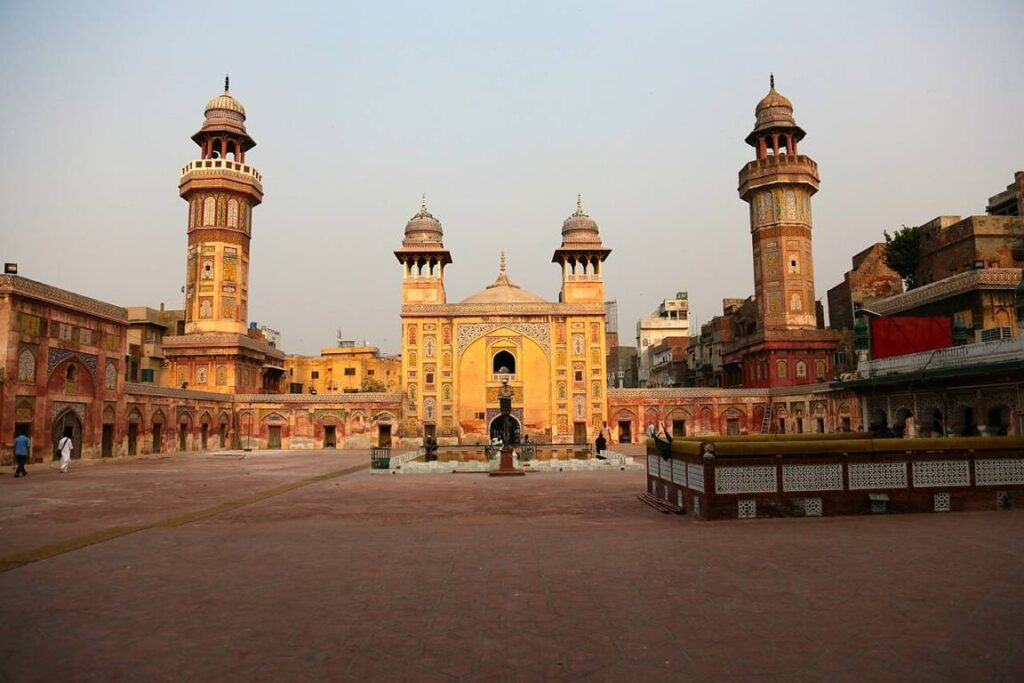
History of Masjid Wazir Khan
The Masjid Wazir Khan, located in the heart of Lahore, Pakistan, is a masterpiece of Mughal architecture that dates back to the 17th century, its construction was started in 1631 and completed in 1641. Built by Hakim Ilm-ud-din Ansari, also known as Wazir Khan, during Emperor Shah Jahan’s reign, the mosque stands as a testament to the artistic prowess and grandeur of the Mughals.
One captivating aspect of Masjid Wazir Khan is its intricate tile work. Known as kashi-kari or kashani work, these handmade ceramic tiles cover every inch of the mosque’s exterior walls and domes. The vibrant blue, green, and yellow hues create a mesmerizing visual experience for visitors. Uniting architectural finesse with spiritual symbolism, these tiles depict floral motifs like roses and tulips alongside Quranic verses.
Another fascinating aspect is the courtyard entrance called Hathi Gate, translated as Elephant Gate. This massive gate stands tall with beautifully carved elephants on each side – a nod to Mughal India’s cultural affinity for these majestic creatures. It acts as an emblematic entrance and provides a glimpse into how historical architecture seamlessly combined practicality with aesthetics.
Click to read the top 10 places to visit in Lahore
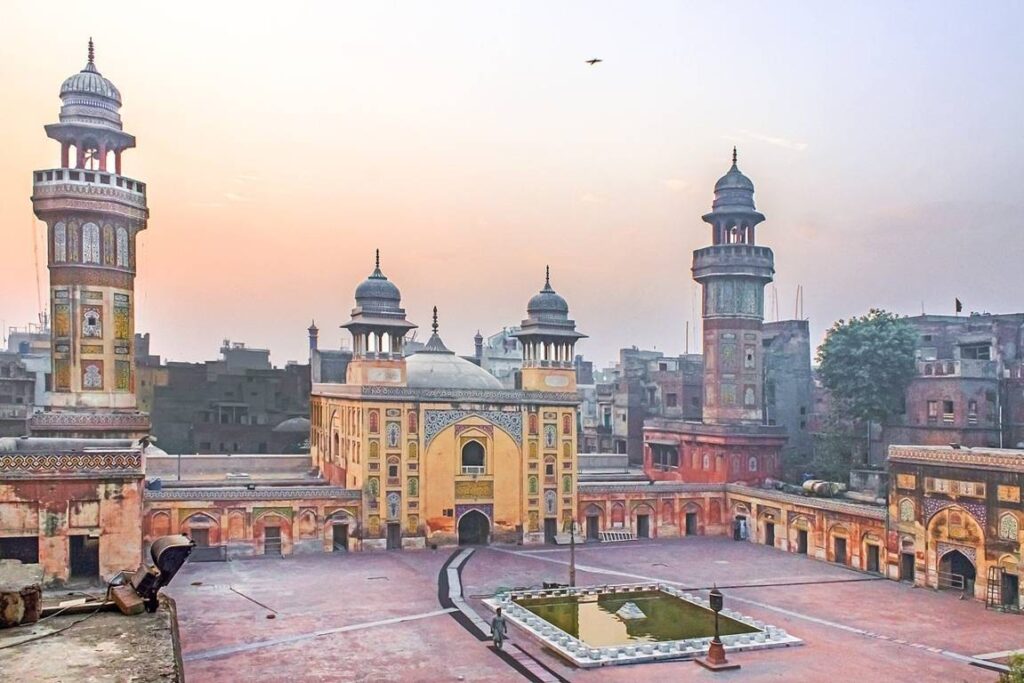
Influences and Origins of Masjid Wazir Khan
The historical significance of the Masjid Wazir Khan in Lahore lies in its influences and origins. Built by the Mughal emperor Shah Jahan’s governor, Wazir Khan, in the 17th century, this mosque showcases a unique blend of architectural styles from various periods.
The influences can be seen in its intricate tile work, calligraphy, and decorative elements that adorn the walls and ceilings of the mosque. The origin of these influences can be traced back to the rich cultural exchange that took place during the Mughal era. With artists and architects hailing from different regions of the empire, their diverse skills and styles were amalgamated to create something truly remarkable. Its historical significance lies in its architectural beauty and representation of a vibrant era marked by cross-cultural pollination and innovation.
Book Lahore Cultural Tours
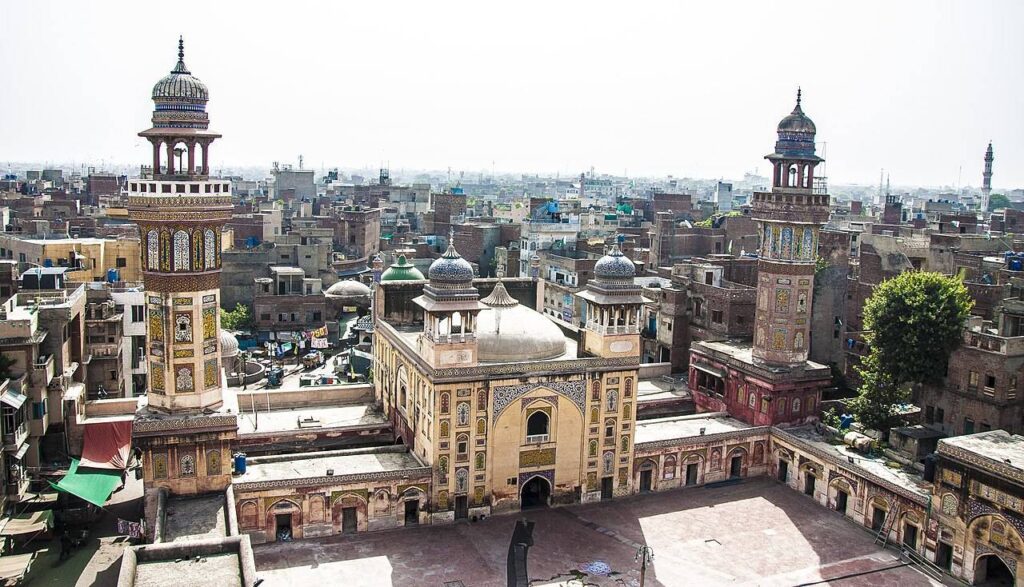
Community Engagement and Religious Activities
The masjid’s significance lies not only in its architectural beauty but also in its historical and cultural relevance. It served as a center for religious and social gatherings during the Mughal period and continues to be an active place of worship today. The mosque’s grandeur reflects the power and prestige of the Mughal Empire and acts as a reminder of its influence on Pakistani culture.
The Masjid Wazir Khan has been a place for people from all walks of life to come together and find solace in their faith. Witnessing how this sacred space continues to unite people today, despite centuries since it was built is awe-inspiring. The mosque serves as a focal point for the local community, providing them with a space to connect and engage in various religious practices. One of the key ways in which the mosque fosters community engagement is by organizing regular gatherings and events that cater to people of all ages and backgrounds.
Read about Minar-e-Pakistan Lahore
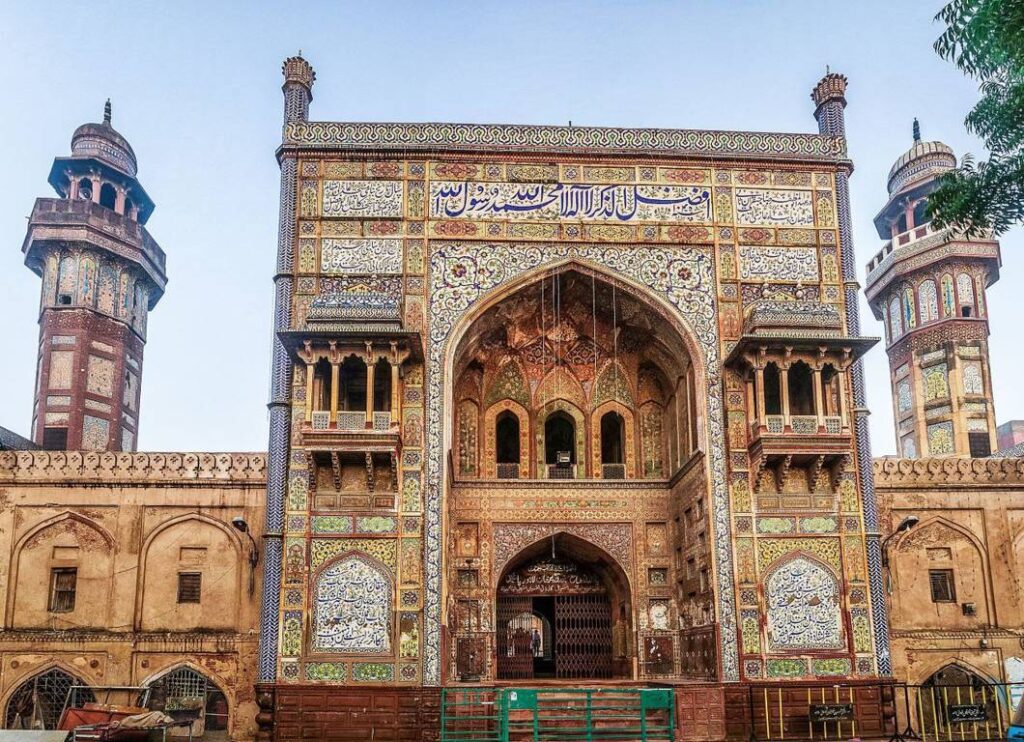
These events often include lectures by renowned scholars on topics ranging from Islamic teachings to contemporary issues relevant to the local community. Additionally, the mosque offers various educational programs such as Quranic classes and other Islamic courses for both children and adults. These initiatives not only promote religious learning but also strengthen social bonds within the community.
Visiting the Masjid Wazir Khan in Lahore is an experience that truly allows one to appreciate the beauty and heritage of this magnificent structure. Every corner of the mosque tells a story and reflects the rich cultural history of Lahore. Preserving these historical sites is essential for future generations so that they too can marvel at their magnificence and learn from our shared history. By acknowledging and valuing such treasures, we ensure they remain windows into our rich heritage for years.
